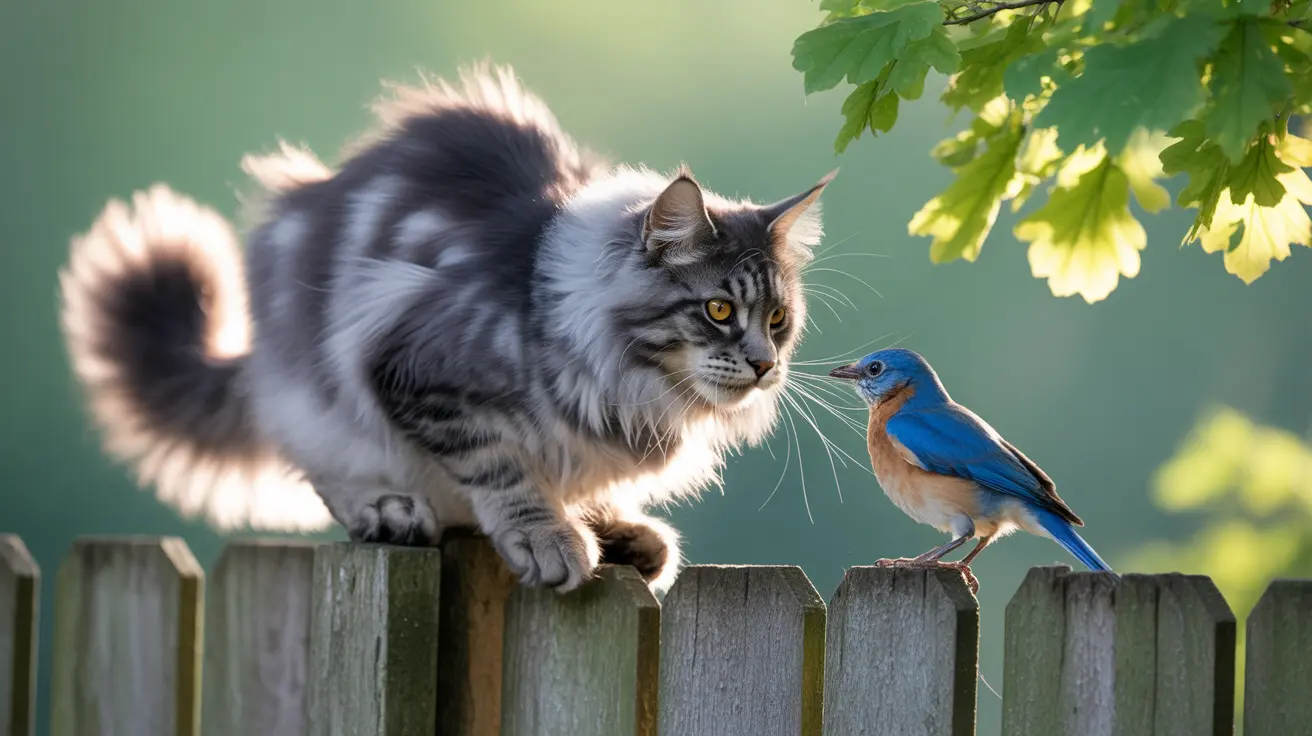The Natural Hunting Instincts of Cats
Cats inherit their hunting abilities from wild ancestors, particularly the African wildcat. These instincts remain strong in domestic cats, regardless of how well-fed they may be. Even kittens display hunting behaviors through play, practicing vital skills they'll use later in life.
The predatory sequence typically includes stalking, chasing, pouncing, and delivering a precise killing bite. This behavior is so deeply ingrained that indoor cats often exhibit these same patterns while playing with toys or watching birds through windows.
Advanced Hunting Techniques
When hunting birds, cats employ sophisticated strategies that showcase their remarkable physical capabilities. They maintain incredibly still positions while stalking, keeping their head level to stay focused on their target. Their retractable claws allow silent movement, while powerful hind legs enable sudden, explosive pounces.
Cats often demonstrate "chattering" behavior when they spot birds, a jaw movement that mimics the killing bite. This behavior might serve as practice or indicate heightened excitement during the hunting process.
Physical Adaptations for Bird Hunting
Cats possess several anatomical features that make them exceptional bird hunters. Their keen eyesight can track fast-moving targets, while sensitive whiskers help gauge spaces and distances. Their flexible spine and excellent balance allow them to make precise movements and quick directional changes when pursuing birds.
Additionally, cats' padded paws enable silent stalking, while their sharp claws and teeth are perfectly designed for capturing and dispatching prey efficiently.
Preventing Bird Predation
For those concerned about protecting local bird populations, several effective methods can reduce cats' hunting success:
- Fitting cats with bright-colored "Birdsbesafe" collars
- Installing bell collars to alert potential prey
- Providing regular interactive play sessions
- Feeding high-protein diets to reduce hunting drive
- Keeping cats indoors during peak bird activity times
Frequently Asked Questions
How do cats use stalking and pouncing to catch birds?
Cats employ a careful stalking approach, moving slowly and staying low to the ground while maintaining complete focus on their target. When within range, they use powerful leg muscles to launch a precise pounce, often covering significant distances to catch their prey.
Why do cats continue hunting birds even when they are well-fed?
Hunting is an instinctive behavior not directly linked to hunger. Cats hunt because their predatory drive is hardwired into their DNA, regardless of how well-fed they may be. This behavior serves both as mental stimulation and as a way to maintain hunting skills.
What natural behaviors and instincts help cats catch birds effectively?
Cats possess keen eyesight, excellent balance, silent movement capabilities, and lightning-fast reflexes. These natural abilities, combined with learned stalking and pouncing techniques, make them highly effective bird hunters.
What are the best ways to prevent my cat from hunting and killing birds?
The most effective methods include using Birdsbesafe collars, keeping cats indoors during dawn and dusk, providing regular play sessions, and ensuring a high-protein diet. Supervised outdoor time on a leash can also satisfy their outdoor interests while protecting birds.
Do certain collars or diet changes reduce my cat's bird-hunting behavior?
Yes, studies show that Birdsbesafe collars can reduce bird kills by up to 87%, while bell collars decrease predation by 25-41%. Additionally, switching to premium, protein-rich food can reduce hunting motivation by up to 36%.
Conclusion
While cats' ability to catch birds showcases their remarkable hunting prowess, it's important to balance their natural instincts with wildlife conservation. Through understanding these behaviors and implementing appropriate preventive measures, cat owners can help protect local bird populations while ensuring their pets remain happy and enriched.






